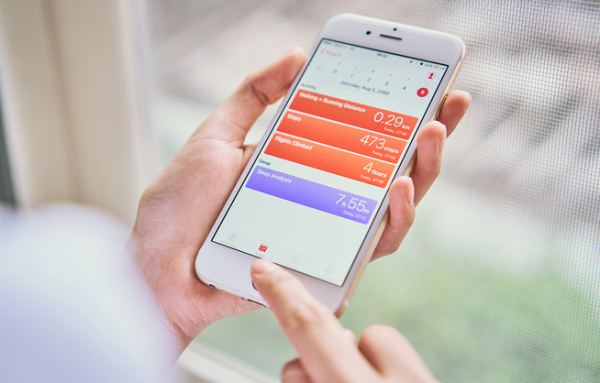If you have ever managed employees, raised children, or trained a puppy, you probably know about the use of reward and punishment. Nobody likes being punished, however, and overuse of punishment kills morale and can ultimately lead to a “Why bother trying?” attitude.
At the same time, if people never experience negative consequences, they risk problems ranging from an incomplete understanding of situations to megalomania. The right balance is required for maximum success.
The employee app has come into its own in the past few years, and 2021 is expected to be another banner year for apps. After all, they make sense for so many reasons. They can help employees accomplish administrative chores easily, keep employees informed quickly, and can be terrific vectors for delivering training. Can employee mobile apps be used for positive reinforcement of best practices? Absolutely.
When Positive and Negative Reinforcements Work Best
Positive reinforcement works best when you are trying to encourage people to complete an action. For example, a hospital will get better compliance with hand-washing rules when hand-washing is immediately and consistently rewarded than they will when lack of hand-washing is punished.
Conversely, punishment works best when you are trying to discourage people from doing something. Sometimes punishment is self-evident, as when a child quickly learns not to touch a hot stove. The good news is that by rewarding positive behavior, that is, by encouraging positive actions, you are less likely to have to punish negative actions because people will have established positive habits. In other words, use positive reinforcement consistently and you are less likely to have to resort to punishment, which is better for everyone.
Consistency Is Necessary for Results
Consistency of reinforcement is absolutely mandatory if you want to establish and strengthen good practices. Does your company consider employee recognition only sporadically for those who prevent safety incidents through good safety practices? If so, then you are not going to get the results you would if you consistently recognized their attention to safety.
Consistency is also necessary for success with negative reinforcement. If, for instance, you only enforce rules against smoking near the building on occasion, then you cannot expect people to abide by the rule consistently. Again, however, if you do a good job of consistently rewarding and reinforcing good practices, you will have fewer reasons to have to resort to punishment.
What is one of the best aspects of employee mobile apps? It is the ability to reward good practices with absolute consistency. When the app “thanks” the user each time he or she clocks in or records work hours, it helps establish these good practices as expected and almost automatic.
Key Elements for Positive Reinforcement Success
In the workplace, employees expect their employers to fulfill their obligations in terms of the employment contract, and how employers do this can encourage or discourage positive actions and best practices. Promotions and raises are the gold standards of reinforcing success, but they are not the only ones. They are not something you can implement for everything.
People also expect to assume more responsibility and autonomy as they prove their skills and usefulness. Believe it or not, employee mobile apps can help here too. Suppose you provide an app-delivered training course that will allow those who successfully complete it to assume a new level of responsibility or autonomy. Congratulations! You have found a great way to motivate and reinforce employee improvement.
Many companies use employee mobile apps to keep employees updated, for example, with a weekly news digest automatically delivered by the app. These updates can be excellent vehicles for delivering employee recognition as well as practical news like on-site construction work that may affect employees.

Peer-to-Peer (Horizontal) Recognition Important Too
Apps offer another, often underappreciated functionality, namely, the ability for peers to thank each other for having their backs. People do this without apps, of course. However, when an employee’s social network or messaging capability is included with an employee mobile app, it is easier than ever for someone to reach out to a colleague and say, “Thanks again for coming through with those design drawings a day early!”
This type of horizontal reinforcement can be encouraged by management as a practice that helps boost overall motivation and morale. Often, receiving specific thanks from a direct colleague for a specific action is especially meaningful – perhaps even more so than having someone from management recognize an accomplishment.
Specific Employee Mobile App Suggestions for Positive Reinforcement
First of all, if you want to use an employee mobile app for positive reinforcement, you must commit to it long term. Managers and executives should buy into the concept to help keep it from fizzling out.
Second, you must make it easy to do. The less that supervisors or peers have to do to recognize someone’s good work, the more likely people are to do it. Keeping it simple is essential. You are also wise to recognize who the “influencers” are in your company and enlist their help specifically. Who is the “go-to” person that everyone trusts? Who is the person everyone happily recognizes at the supermarket or in other non-work settings? These are people who can help ensure that positive reinforcement initiatives are used consistently and over the long term.
Apps Can Be Excellent Behavior Change Tools
Mobile apps are a relatively new phenomenon, and already it is clear how they can be outstanding tools for helping establish behaviors and learn new concepts. Millions of people, for example, use apps like Duolingo to establish or improve foreign language skills due to the app’s ability to quickly reward success. Apps exist to reward behaviors ranging from walking so many steps in a day to abstaining from alcohol or drug use. The more usable and friendly they are, the more likely people are to use them.
The same is true for your employee engagement app. Sure, you can require that people use apps to complete time records even if the interface is clunky and the app crashes regularly, but that is not going to help employee engagement. For your employee mobile app to prove its mettle, it has to be usable, friendly, and rewarding, so people want to open it regularly throughout their day.
With HubEngage, you can create an employee app that is custom-designed to your workforce and its specific needs. HubEngage offers a powerful, flexible platform for the development of employee apps that can deliver training, handle administrative tasks, and deliver the positive reinforcement employees crave so they are motivated to keep on being awesome. Did you know you can try the HubEngage app for free? Sign up for a 7-day trial and experience HubEngage for yourself!













